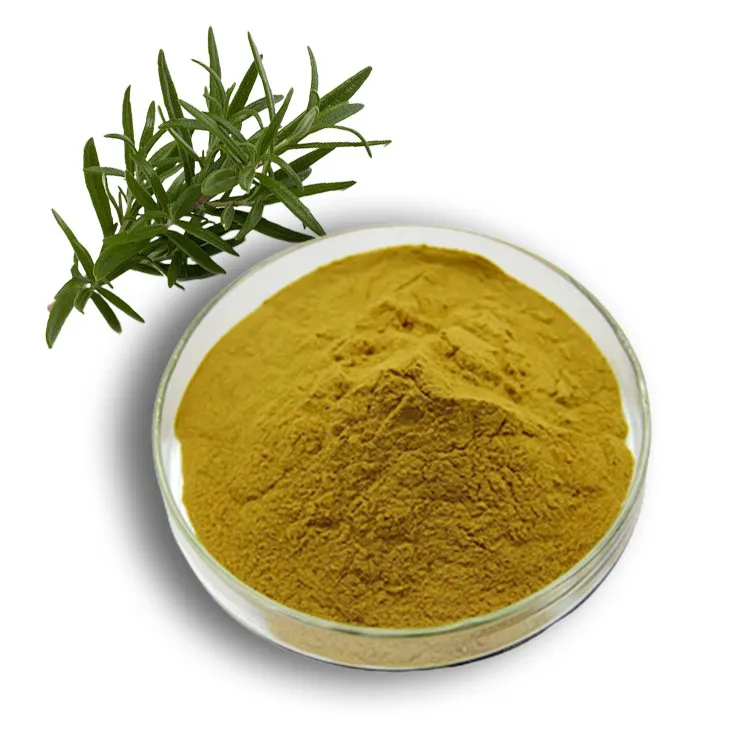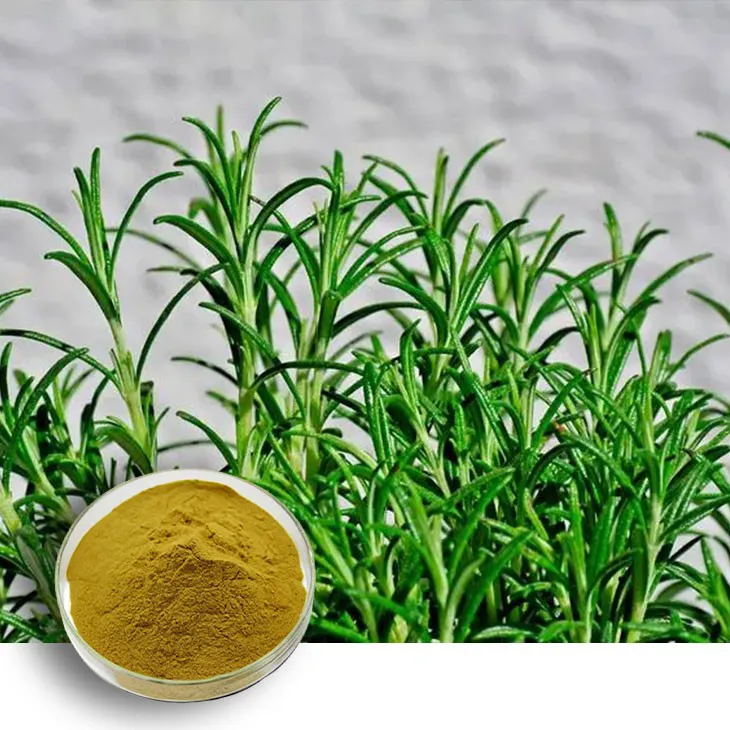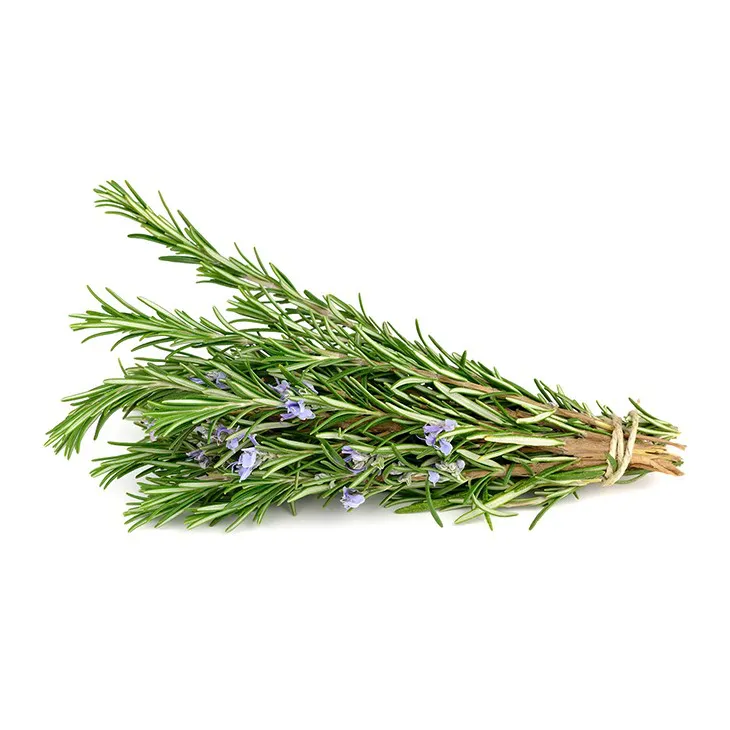- 0086-571-85302990
- sales@greenskybio.com
Active components in rosemary extract.
2024-11-30

1. Introduction
Rosemary (Rosmarinus officinalis) is a well - known herb that has been used for centuries in various applications, including cooking, traditional medicine, and cosmetics. The extract of rosemary contains a variety of active components that are responsible for its numerous beneficial properties. These active components have attracted significant attention from researchers and industries alike due to their potential applications in areas such as health, food preservation, and skincare.

2. Diterpenes in Rosemary extract
2.1 Carnosol
Carnosol is one of the important diterpenes present in Rosemary extract. It has emerged as a compound with remarkable properties.
2.1.1 Antioxidant Activity
As an antioxidant, carnosol plays a crucial role in protecting cells from oxidative damage. Oxidative stress is associated with many diseases and the aging process. Carnosol can inhibit lipid peroxidation, which is a key process in oxidative damage. Lipid peroxidation can lead to the destruction of cell membranes and the formation of harmful reactive oxygen species (ROS). By preventing lipid peroxidation, carnosol helps maintain the integrity of cells and their normal functions.
2.1.2 Potential in Cancer Prevention
There has been growing interest in the potential of carnosol in cancer prevention. Research has suggested that carnosol may interfere with cancer cell growth. It may act on multiple pathways within cancer cells. For example, it could potentially affect cell cycle regulation, apoptosis (programmed cell death), and angiogenesis (the formation of new blood vessels that supply tumors). However, more research is still needed to fully understand the mechanisms and its potential as a cancer - preventive agent.

3. Flavonoids in Rosemary extract
Flavonoids are another group of active components in rosemary extract. They contribute significantly to the overall properties of the extract.
3.1 Antioxidant Activity
Similar to carnosol, flavonoids in rosemary extract possess antioxidant activity. They can scavenge free radicals, which are highly reactive molecules that can cause damage to cells, DNA, and proteins. The antioxidant activity of flavonoids helps to reduce oxidative stress in the body. This can have a positive impact on overall health, as it may lower the risk of developing various chronic diseases such as heart disease, diabetes, and neurodegenerative disorders.
3.2 Anti - Allergenic Activity
Flavonoids also play a role in anti - allergenic activities. Allergies occur when the immune system overreacts to harmless substances, known as allergens. Flavonoids may help modulate the immune response in such a way that it reduces the excessive reactivity to allergens. They could potentially affect the release of inflammatory mediators such as histamine, which is involved in allergic reactions. By reducing the allergic response, flavonoids in rosemary extract may offer relief for those suffering from allergies.

4. Essential Oil Components in Rosemary Extract
4.1 Cineole
The essential oil components in rosemary extract, such as cineole, are of great importance.
4.1.1 Antimicrobial Activity
Cineole has been shown to have antimicrobial properties. It can be effective against a variety of microorganisms, including bacteria, fungi, and viruses. The antimicrobial activity of cineole makes rosemary extract useful in applications such as food preservation, where it can help prevent the growth of spoilage - causing microorganisms. In addition, it can also be used in the development of natural antimicrobial agents for use in healthcare settings to combat infections.
4.1.2 Expectorant Properties
Cineole also has expectorant properties. It can help to loosen and expel mucus from the respiratory tract. This makes it beneficial for treating respiratory conditions such as coughs, colds, and bronchitis. By promoting the clearance of mucus, cineole can relieve congestion and improve breathing.

5. Other Active Components and Their Potential Applications
In addition to diterpenes, flavonoids, and essential oil components, rosemary extract may contain other active components that are still being explored.
- Rosmarinic acid is another compound found in rosemary. It has been studied for its anti - inflammatory properties. Inflammation is a key factor in many diseases, and by reducing inflammation, rosmarinic acid may have potential applications in the treatment of conditions such as arthritis and inflammatory bowel disease.
- Some phenolic compounds in rosemary extract may have neuroprotective effects. These could be important for preventing or treating neurodegenerative diseases such as Alzheimer's and Parkinson's. They may act by protecting neurons from oxidative stress, inflammation, and other factors that can damage them.
6. Applications of Rosemary Extract and Its Active Components
6.1 In the Food Industry
- As an antioxidant, rosemary extract can be used to extend the shelf life of food products. It can prevent the oxidation of fats and oils, which is a major cause of rancidity in foods. This is particularly important for products such as meat, fish, and fried foods.
- The antimicrobial properties of rosemary extract can also be utilized in food preservation. It can help inhibit the growth of spoilage - causing bacteria and fungi, reducing the need for synthetic preservatives.
- Rosemary extract can be used as a flavoring agent in the food industry. It imparts a unique and pleasant flavor to various dishes, such as roasted meats, soups, and stews.
6.2 In the Cosmetics and Skincare Industry
- The antioxidant properties of rosemary extract make it a valuable ingredient in skincare products. It can protect the skin from oxidative damage caused by environmental factors such as UV radiation and pollution. This can help prevent premature aging of the skin, including the formation of wrinkles and age spots.
- Some of the active components in rosemary extract, such as flavonoids, may have anti - inflammatory properties that can be beneficial for treating skin conditions such as acne, eczema, and psoriasis. They can reduce inflammation in the skin and promote healing.
- The essential oil components of rosemary extract can also add a pleasant aroma to cosmetics and skincare products, enhancing their appeal to consumers.
6.3 In the Pharmaceutical Industry
- The potential cancer - preventive properties of carnosol and other active components in rosemary extract are of great interest in the pharmaceutical industry. Research is ongoing to develop drugs or supplements based on these components for cancer prevention or treatment.
- The anti - inflammatory and antioxidant properties of rosemary extract may also have applications in the treatment of other diseases, such as cardiovascular diseases and neurodegenerative disorders. For example, it could be used to develop drugs that target inflammation and oxidative stress in these conditions.
7. Conclusion
Rosemary extract contains a diverse range of active components, including diterpenes, flavonoids, and essential oil components. These components have various beneficial properties, such as antioxidant, anti - cancer, anti - allergenic, antimicrobial, and expectorant activities. The potential applications of rosemary extract and its active components are wide - ranging, covering the food, cosmetics, and pharmaceutical industries. However, further research is still needed to fully understand the mechanisms of action of these components and to develop more effective products based on them. With continued research, rosemary extract has the potential to become an even more important natural resource in the future.
FAQ:
What are the main active components in rosemary extract?
The main active components in rosemary extract include diterpenes (such as carnosol), flavonoids, and essential oil components (such as cineole).
How does carnosol in rosemary extract function as an antioxidant?
Carnosol can inhibit lipid peroxidation, which is a key mechanism for it to act as an antioxidant.
What is the potential of carnosol in cancer prevention?
Carnosol may interfere with cancer cell growth, showing potential in cancer prevention, although more research is still needed.
How do flavonoids in rosemary extract contribute to anti - allergenic activities?
The specific mechanisms are still being studied, but flavonoids are known to have certain properties that contribute to the anti - allergenic activities of rosemary extract.
What are the applications of cineole in rosemary extract due to its antimicrobial and expectorant properties?
Cineole can be used in areas such as medicine and food preservation. In medicine, its expectorant property can help with respiratory problems, and its antimicrobial property can be useful for preventing infections.
Related literature
- The Chemical Composition and Bioactivity of Rosemary (Rosmarinus officinalis L.)"
- "Rosemary Extract: A Promising Natural Antioxidant for Food and Pharmaceutical Applications"
- "Active Components of Rosemary and Their Health Benefits"
- ▶ Hesperidin
- ▶ citrus bioflavonoids
- ▶ plant extract
- ▶ lycopene
- ▶ Diosmin
- ▶ Grape seed extract
- ▶ Sea buckthorn Juice Powder
- ▶ Beetroot powder
- ▶ Hops Extract
- ▶ Artichoke Extract
- ▶ Reishi mushroom extract
- ▶ Astaxanthin
- ▶ Green Tea Extract
- ▶ Curcumin Extract
- ▶ Horse Chestnut Extract
- ▶ Other Problems
- ▶ Boswellia Serrata Extract
- ▶ Resveratrol Extract
- ▶ Marigold Extract
- ▶ Grape Leaf Extract
- ▶ blog3
- ▶ blog4
-
The Best Method for Extracting Vitamin D3.
2024-11-30
-
Chinese Lycopene Powder Factories.
2024-11-30
-
Chinese konjac powder factory.
2024-11-30
-
The Most Worth - Buying Lily Extract Brands.
2024-11-30
-
The best pitaya powder on the market.
2024-11-30
-
Optimal Bioavailability of Feverfew Extract.
2024-11-30
-
Bulk purchase of orange - flavored powder.
2024-11-30
-
Cocoa Extract
2024-11-30
-
Mangosteen extract powder
2024-11-30
-
Golden Seal Extract
2024-11-30
-
Pine bark Extract Powder
2024-11-30
-
Okra Extract
2024-11-30
-
Sophora Flavescens Root Extract
2024-11-30
-
Longan Extract
2024-11-30
-
Lemon Juice Powder
2024-11-30
-
Mulberry leaf Extract
2024-11-30
-
Sea buckthorn oil
2024-11-30





















